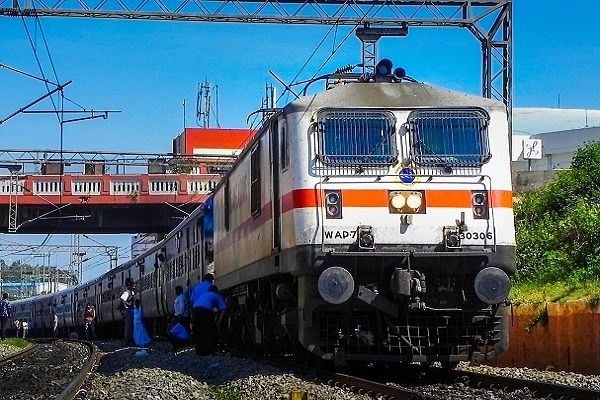News Brief
National Rail Plan Forecasts 3,500 Million Tonne Freight, 12 Billion Passengers By 2030
- The National Rail Plan has laid down infrastructural measures that are required to augment the capacity of the network along with timelines.

Indian Railways (Pramath S B/Wikimedia Commons)
National Rail Plan-2030 (NRP-30) is drawing up measures to increase passenger volume to 12 billion per annum, 3,500 million tonne freight and Rs 50 lakh crore worth rail works.
Slated to be launched in the first week of December, the NRP-30 target is to make the entire Golden Quadrilateral and Golden Diagonal routes operational at 160 kmph speed, in addition to six high-speed rail corridors along with more dedicated freight corridors criss-crossing the country.
The NRP-30 aims to create capacity by 2030 ahead of demand, which should be substantially adequate to accommodate demand growth up to 2050.
The plan has also laid down infrastructural interventions that are required to augment the capacity of the network along with timelines.
Due to capacity constraints, Indian Railways is unable to meet demand in both passenger and freight especially during peak periods. Unmet demand constantly is shifting from rail to other modes and as a result, the modal share of the railways is constantly dropping.
The challenge before the railways is to create capacity that will not only accommodate increasing demand but also reduce cost of operations which can be leveraged for increasing modal share.
Over-saturation of capacity also increases cost of operations resulting in high operating ratio which means low or no profitability.
Logistics cost also needs to be reduced as at present it is 13 per cent of the production cost while the global benchmarking is about 5 per cent to 6 per cent.
The government has given the railways target of 45 per cent modal share in transportation which is currently at 26 per cent, said an official.
In 1958, the railways' modal share in transportation was 80 per cent, which has been reduced over the years to 26 per cent now.
"It is because the capacity is less and demand is more resulting in the unmet demand escaping to the road sector. So over the years it was bleeding away railway shares to road sector. The capacity augmentation could not match the pace of demand. While volume has gone up many times, the capacity has grown in a small fraction," the official added.
The focus of the NRP-30 is to increase the freight volume with a concrete business plan and speed up the passenger-carrying trains as well as goods trains, said a senior Railway Ministry official.
Taking into account the upcoming zero-based time table and private train operation, the NRP-30 has envisaged introduction of seat on demand in popular trains while doing away with waiting list problems.
At present, there are 8 billion passengers who book tickets per year in the railways which is slated to increase up to 12 billion by 2030.
The NRP-30 envisages the freight volume to increase to 3,500 million tonnes along with increasing the average speed of goods trains from the current 25 kmph to 50 kmph.
The NRP-30 provides the platform for combining infrastructural planning with business planning of the railways. In addition to infrastructural planning, the NRP will provide for policy interventions required to increase the modal share of the railways.
The NRP-30 will also provide models for funding/financing projects that the railways can adopt in future projects. This is as per NITI Aayog’s directives. The NRP-30 has also highlighted the increase of capital expenditure by three to four times with a concrete business plan by 2030.
The NRP-30 has also emphasised on reduction in travel time with major trunk routes being upgraded to 160 kmph and induction of train sets for passengers.
Carbon emission is a global concern and the transportation sector is a major contributor to the increased carbon footprint. According to the government, the railways has a major role in reducing the emission by opting for 100 per cent electrification to make Indian Railways environment-friendly.
Introducing ElectionsHQ + 50 Ground Reports Project
The 2024 elections might seem easy to guess, but there are some important questions that shouldn't be missed.
Do freebies still sway voters? Do people prioritise infrastructure when voting? How will Punjab vote?
The answers to these questions provide great insights into where we, as a country, are headed in the years to come.
Swarajya is starting a project with an aim to do 50 solid ground stories and a smart commentary service on WhatsApp, a one-of-a-kind. We'd love your support during this election season.
Click below to contribute.
Latest